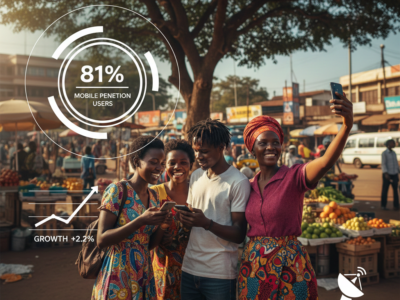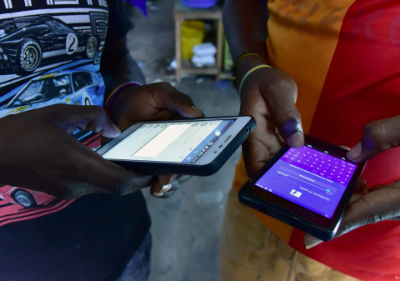In a dramatic reshaping of Zimbabwe’s internet landscape, Starlink has emerged as the dominant player in international bandwidth usage, accounting for a staggering 83% of the country’s total in Q1 2025. This is according to the latest quarterly report released by POTRAZ, the national telecoms regulator. What makes this even more extraordinary is that Starlink serves just 9% of Zimbabwe’s fixed internet subscribers.
The numbers are eye-opening. As of March 2025, Starlink had only 27,000 subscribers in Zimbabwe, up from 20,000 in December 2024. Yet that relatively small user base is consuming the vast majority of Zimbabwe’s international internet traffic. Meanwhile, all other technologies combined—Fibre, Fixed LTE, DSL, and WiMax—are contributing just 17% of usage, despite representing over 90% of the market by subscriber count. It’s a data paradox that raises more questions than answers, and clearly signals a deep transformation in how and where Zimbabweans are accessing the internet.
POTRAZ does not reveal exactly how Starlink’s bandwidth usage was calculated, nor whether the figures are self-reported by the company or derived through local network monitoring. Still, the regulator did acknowledge for the first time in clear terms that the service is a disruptive force in Zimbabwe’s digital space: “The massive growth in used incoming international internet bandwidth capacity may be attributed to Starlink as it commanded 83% of the usage in the quarter under review.”
While the report stops short of providing technical details, one plausible explanation lies in Starlink’s unlimited data model. Unlike traditional ISPs that predominantly offer capped packages, Starlink lets users consume as much data as they need without restrictions. In practice, that means heavy usage for streaming, gaming, cloud-based work, and possibly operating rural internet cafés—activities that quickly add up to enormous data consumption. If uncapped access is driving the surge, it suggests most subscribers on legacy networks are severely limited in what they can do online due to restrictive data caps.
Another significant factor could be Starlink’s reach beyond urban centers. While traditional internet infrastructure in Zimbabwe has historically concentrated in cities like Harare and Bulawayo, Starlink is connecting people in rural and remote areas where coverage has long been nonexistent. This is especially crucial in a country where 68% of the population lives in rural areas, and where internet access has largely been a luxury for the few. The ability for a villager, farmer, or rural school to connect directly to a satellite and get world-class internet—without waiting for fibre to be laid or towers to be erected—is nothing short of revolutionary.
Interestingly, demand is not confined to underserved regions. In some urban centers, including Harare and parts of Bulawayo, Starlink equipment is reportedly sold out. Despite being a premium product with high upfront and monthly costs, Zimbabweans are signing up at a pace that outstrips supply. It underscores the pent-up demand for stable, fast, and unrestricted internet access—demand that legacy providers have struggled to meet due to infrastructure limitations, regulatory challenges, and economic headwinds.
This unprecedented surge has massive implications for Zimbabwe’s digital economy. With bandwidth no longer limited to urban elites, and with new users entering the online world from all corners of the country, opportunities in e-commerce, education, content creation, and remote work are likely to expand rapidly. However, it also presents a challenge to traditional ISPs, who must now compete not just on price, but on capacity, coverage, and service quality. If they continue offering capped packages while Starlink delivers unlimited internet across the country, the balance of power in the sector could tilt permanently.
Yet many questions remain. Without transparency on how usage metrics are collected and verified, it’s hard to fully assess the scale or sustainability of Starlink’s dominance. And as more subscribers come online, it remains to be seen whether infrastructure and bandwidth can keep pace with demand. Still, one thing is certain: Starlink has redefined what’s possible in Zimbabwe’s internet space—unlocking potential that has sat dormant for years, especially in the country’s rural heartlands.













Comments